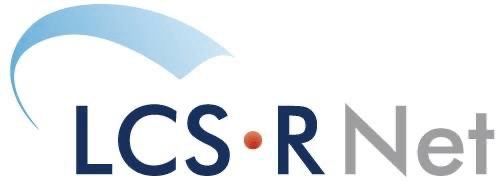INTERVIEW
Achieving ambitious climate goal is still possible, but requires consistent actions.
Henri Waisman, Coordinating Lead Author of Chapter 5, IPCC Special Report on 1.5°C
Interview Date: 18 October 2018 / location: AgroParistech (16, Rue Claude Bernard ) ( Paris, France)
Kainuma: First, could you please tell us the key messages and implications of the 1.5℃ Special Report ?
Waisman: This report is unique in history as this is the first time that governments explicitly made a request to the IPCC. As such, it already demonstrates the strong legitimacy of the work of the IPCC to inform policy processes.Scientifically, this report is also unique as there is very little literature focusing on challenges and questions dealing with the SR 1.5 when the report was commissioned. The simple fact that the IPCC decided to produce a report on 1.5C gave sufficient incentive for the very fast development of the literature on this emerging topic.Importantly, it is also the first cross-working groups report which highlights the relevance and need for multidisciplinary work to derive policy-relevant insights.
It is also the first time that sustainable development is given such a prominent role, as it is acknowledged in the title and it forms the core of the last chapter which closes the arc of the report.
The key message I would retain from the report is that it is still possible to reach very ambitious climate objectives, but it requires consistent action from the short-term to the long-term. Basically, strong action is needed now to keep the window of opportunities open for maintaining control of global warming without having to rely on solutions that may negatively affect other societal or environmental objectives (notably CDR options threatening food production if they are implemented at large scale).
Another strong message is that every bit of warming matters in terms of impacts, so that the climate discussion should never be stopped. Even if at some point some targets are missed, it will always be important to continue acting to reach the best possible target given actual circumstances.
Finally, and importantly, climate change is fundamentally a story about people. Controlling climate change is primarily a condition to satisfy better the needs of the people and notably to protect the most vulnerable. Therefore this is fundamentally a matter of equity. Without ambitious climate change actions, there is no equity; without equity, there is no realistic possibility for limiting climate change.
Kainuma: What do you think about the Talanoa dialogue and actions having been taken by various stakeholders?
Waisman: The message from the report to the Talanoa dialogue is crystal clear: all actors, and notably governments, need to significantly increase their ambition by 2020. This is a condition to be in a situation to satisfy social and environmental objectives; otherwise, if we delay action, we will be trapped in impossible tradeoffs, between some sustainable development objectives and climate change, with important losses occurring.
Another key message is that it is of utmost importance to strengthen the capacities for climate action of national and sub-national authorities, civil society, the private sector, indigenous peoples and local communities, in order to support the implementation of ambitious actions implied by limiting global warming to 1.5°C.
International cooperation can provide an enabling environment for ambitious climate goals to be achieved in all countries and for all people, in the context of sustainable development. International cooperation is a critical enabler for developing countries and vulnerable regions.
Kainuma: How can the report have an impact on policies?
Waisman: Chapter 5 takes sustainable development as its entry point. It highlights that considering sustainable development broadly supports ambitious mitigation and adaptation, and that there are a number of synergies between the different objectives. But tradeoffs can also exist, depending notably on national circumstances and policy packages. The chapter shows also that maximising the synergies requires careful consideration of specificities of the local context and of the characteristics of the people. There is not a one-size-fits all solution, but instead solutions must be tailor-made to fit to the context. Chapter 5 highlights the importance of equity considerations both within countries and among countries, in order to provide the enabling environment required by each country to be able to implement the drastic transformation at stake without compromising sustainable development objectives. This goes notably with adequate cooperation that is not limited to basic transfers from developed to developing countries, but more broadly considers global-scale exchanges and coordination.
Figure SPM4 shows that options for 1.5C mitigation can be synergetic with SDGs in many cases. However, the main challenge appears when these options are to be considered in a consistent economy-wide approach, and when they are included in a broad portfolio where there is risk of indirect negative effects on one dimension or the other. This is where it is essential to have careful design of strategies that are able to address these issues systematically. All countries should develop a set of long-term strategies articulating concretely sustainable development dimensions and mitigation/adaptation in a systemic manner and across time.
Kainuma: What is happening in France?
Waisman: France is currently developing a revision to its national low-carbon strategy. The previous version submitted in 2015 considered -75% emissions by 2050 as its goal; the next iteration to be submitted by mid-2019 will consider in particular some options to reach carbon neutrality by 2050. Key challenges in France include: retrofitting of the residential building stock (which is very inefficient); control of mobility needs; future of nuclear energy, which represents more than 75% of electricity production today with very old power plants; deployment of non-hydro renewables, which remain at low level; role of agriculture-related emissions and so on.
Kainuma: Thank you very much for your time and useful information.
 Leveraging a Climate-neutral Society
Leveraging a Climate-neutral Society

